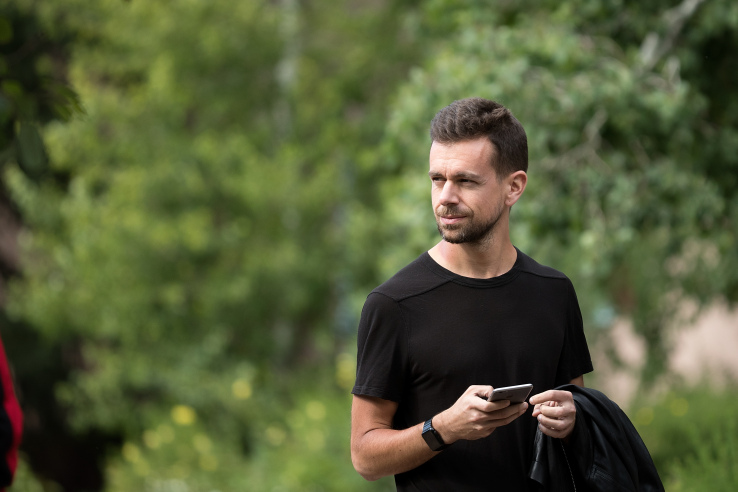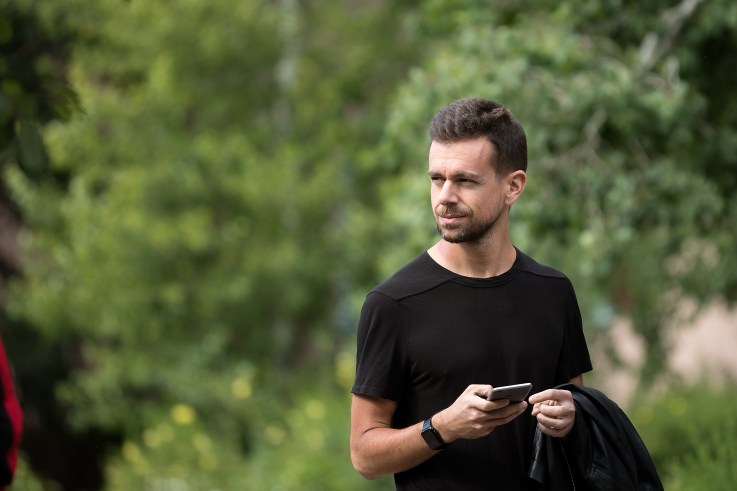

As Twitter’s growth continues to stall and increasingly becomes an issue, Twitter CEO Jack Dorsey’s double-time running both Twitter and Square has become a big question mark — and Dorsey says he’s staying the course.
“This focus, and this team, allows me and gives me a lot of confidence I can continue to focus on the meaningful things at both companies and we have the right prioritization in front of us,” he said on a conference call discussing Twitter’s fourth-quarter earnings.
This is a semi-soft way of answering the question by saying Twitter’s installed a good team that takes enough pressure off him to make high-level decisions at both companies. There’s still been essentially a round-robin at the top, but toward the end of last year Twitter tried to streamline the company with a big round of layoffs as it tried to return to growth. That turnover at the top — like the company’s CTO Adam Messinger and VP of product Josh McFarland leaving in December — is likely not helping Dorsey’s case.
That didn’t help in the fourth quarter, where Twitter not only missed revenue targets set by Wall Street but also saw its advertising business reverse course and drop year-over-year. Twitter’s shares dropped another 10% following the earnings call, continuing to compound problems with Dorsey’s case that he can continue to run both companies in an effective way. Since returning as CEO of Twitter, the stock hasn’t had a very good run and really the only bright spot happened when talks of the company getting acquired bubbled up late last year.
As that stock price continues to drop off and pressure mounts, Twitter — and Dorsey — are going to be in the crosshairs. The company is going to be increasingly attractive to activist investors that may see an opportunity to swoop in and rejigger the upper levels of the company in order to look at different ways to start generating revenue and return it to growth. We’ve seen it happen before in the case of Yahoo, and activist agitation from investors like Carl Icahn even prompted Apple to increase the amount of value it’s returning to shareholders.
Whether or not the company’s issues lie with other parts of the team, its core legacy products or otherwise, the blame for poor performance is largely going to land on the CEO. Twitter executives on the earnings call said they were going to redistribute resources to focus on advertising products that were working and growing, which could lead to de-emphasizing other products that were already generating revenue. So that, in the short-term, may impact the company’s ability to regenerate revenue.
In short, this is going to be a big sticking point going forward. Twitter is going to try to move faster this year, Dorsey said on the earnings call, and the team and infrastructure the company has set up is going to contribute to that. Twitter’s largely incremental changes over the course of time are also contributing to increased engagement, he said. But it means that Dorsey is basically saying Twitter will deliver this year, and if it doesn’t Twitter may end up being another target for Wall Street to come in and try to re-organize.
“Late last year, we really flattened the org… so I could be closer to the product,” Dorsey said. “Now we’ve spent a year going through and making sure we reset the foundation on what we’re executing and what our priorities are, we have a lot more confidence that we can move a lot faster on bigger things.”
Featured Image: Drew Angerer/Getty Images

